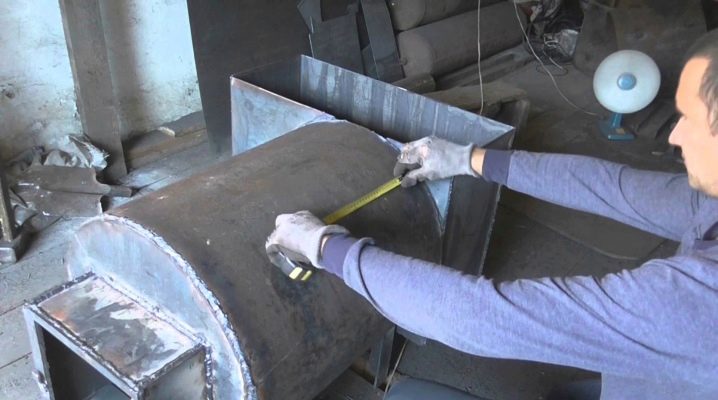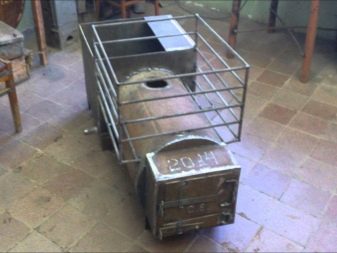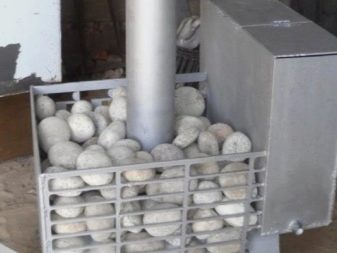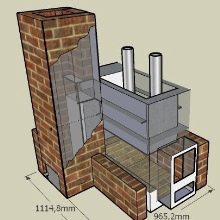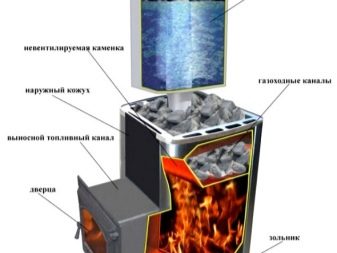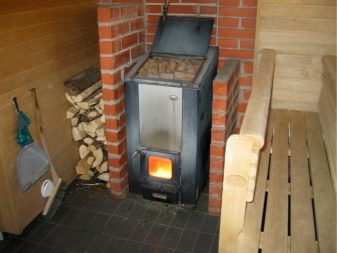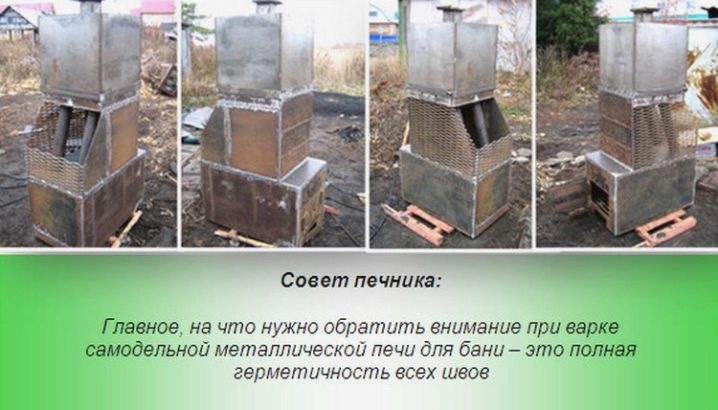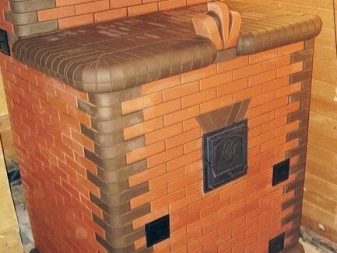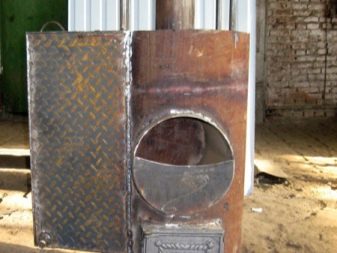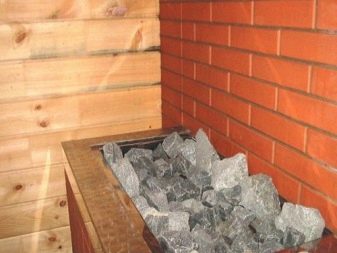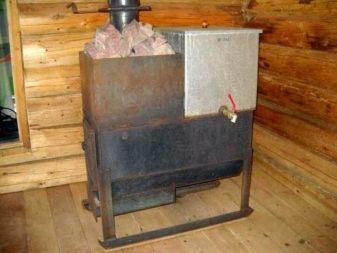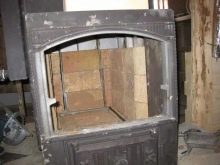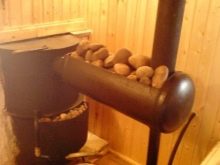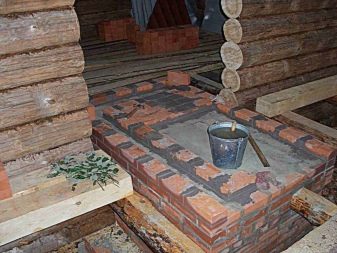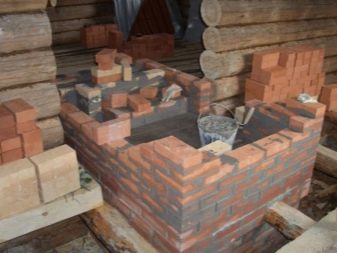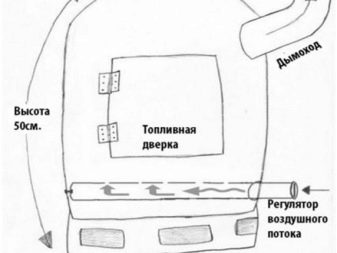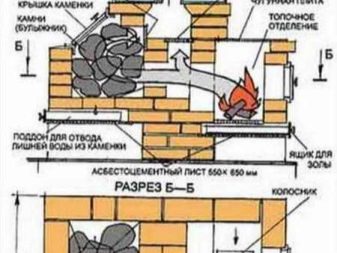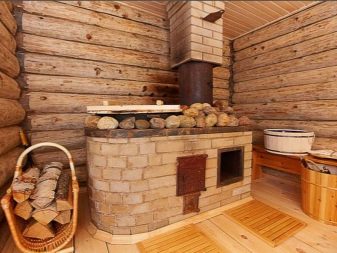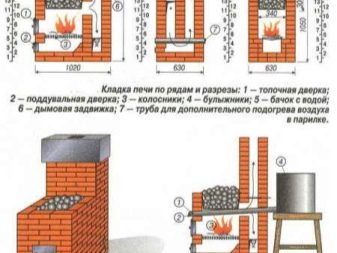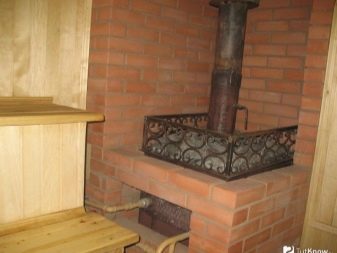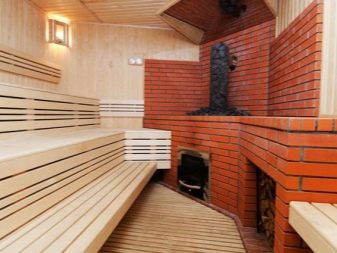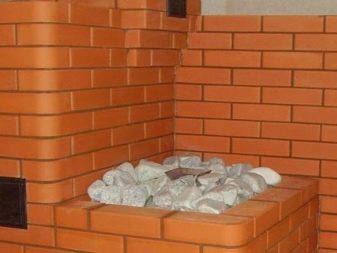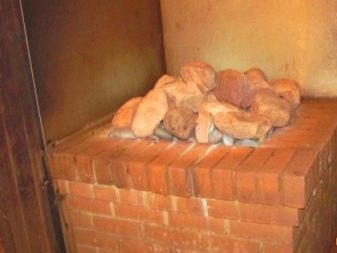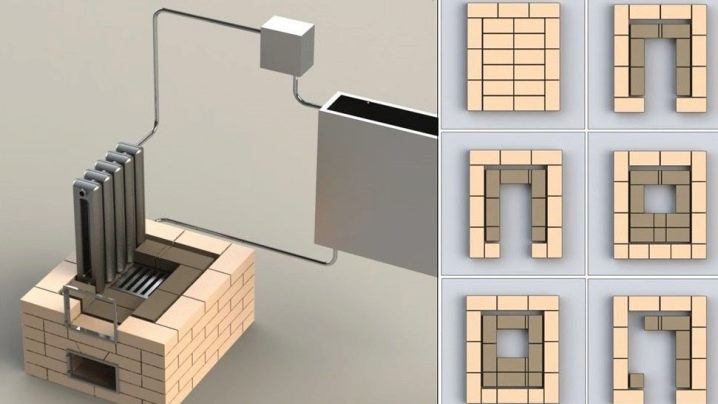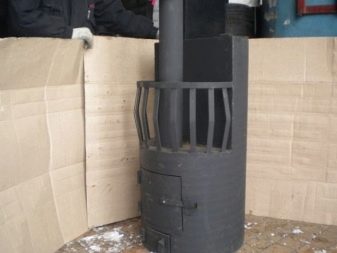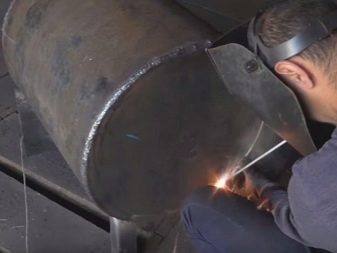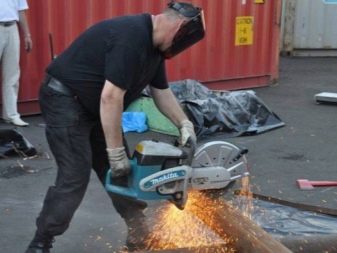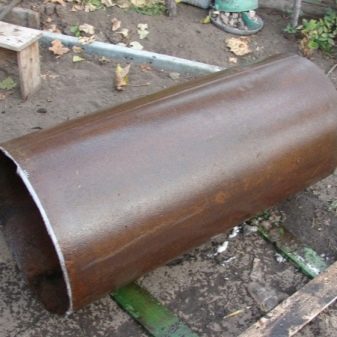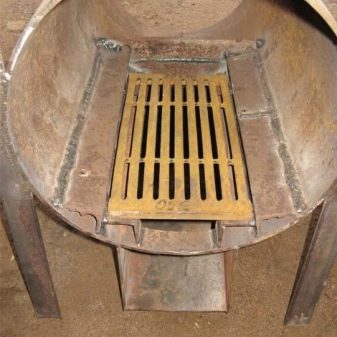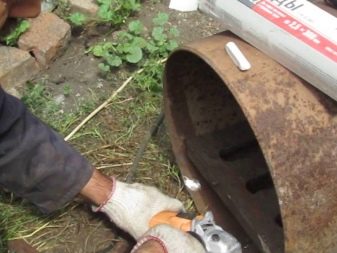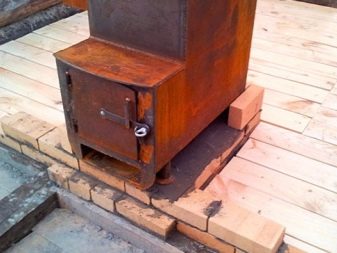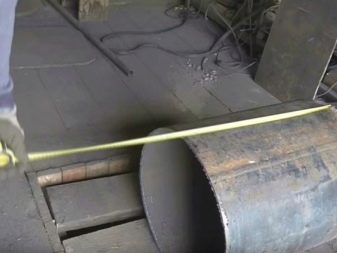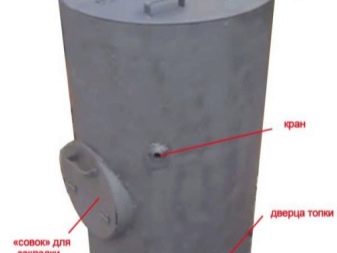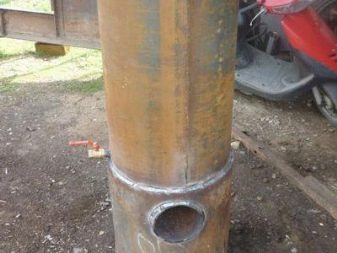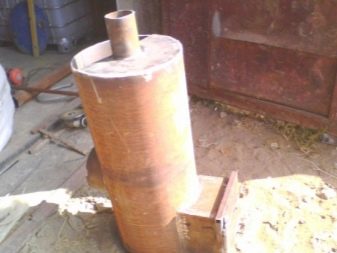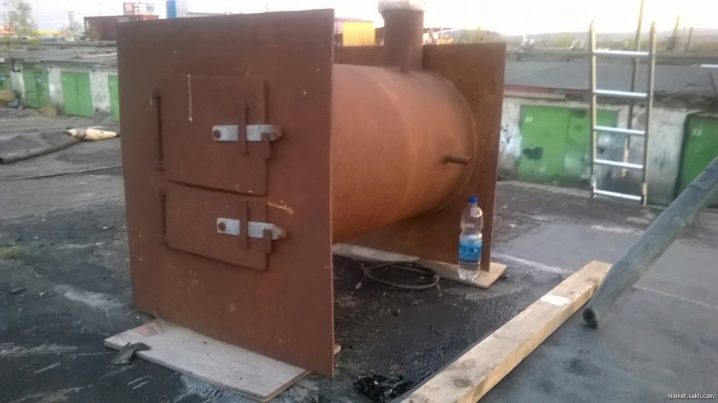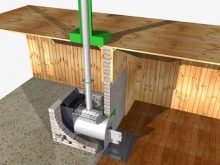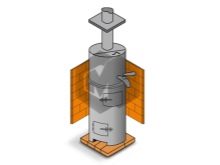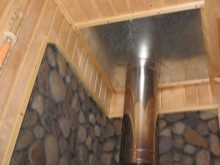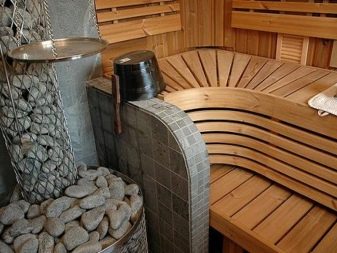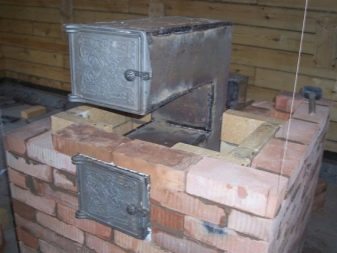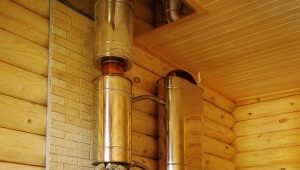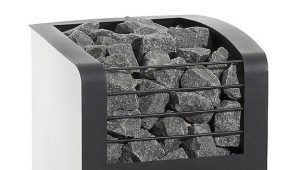Self-made stoves for a bath: types and designs
The choice and construction of the stove for your bath should always be treated with a special attitude, because the stove is the most important part in the bath, the heart. The bath stove has a very specific application, it not only heats the steam room and gives steam - it can also heat the water tank.
Features and requirements
To the stove in the bath, as well as to any other equipment, impose certain requirements, not only because it should be a pleasure to use, but also because it can be fire hazardous.
- The furnace is installed on a separate foundation (with the exception of mobile options).
- It must meet the requirements of tightness, ideally should not have a single gap or crack.
- Wood trim, which is located in the immediate vicinity of the stove, is treated with an antiseptic, and in order to ensure its fire safety, it is not advisable to sheathe a metal coating.
- It is necessary to keep a safe distance from metal parts at the stove to any objects made of combustible materials (plastic, wood, etc.).
- The ash pan is placed so that its door is not lower than 15 cm from the floor level.
- The ceiling and top of the stove must be separated by at least half a meter of free space.
- The floor around the furnace is sewn up with metal sheets.
- Usually the stove is located near the waiting room.
The stove should heat the upper level in the steam room to a temperature of 80 ° C, for the lower zone the temperature should not fall below 45 ° C.
It is necessary to warm the stones on the stove to form a sufficient amount of steam when they are spilled.
When using solid fuels, it should burn completely. One more prerequisite - complete tightness of the chimney and fireboxso that it has a high efficiency.
Kinds
Kamenka stove can be closed or open type. A closed heater does not cool down for a longer period of time, but it will be possible to warm up the steam room for a longer time, and a lot more fuel will be spent. A closed heater is constructed when the bath is used relatively rarely.
With an open type sauna stove, the steam room can be heated in a short time, but when water is poured onto stones, it quickly loses temperature. For any heaters, it is recommended to use only solid parts of round-shaped stone.
Manufacturing materials
If they want to build a brick oven, it is advised to take certain grades, this is especially important when facing with refractories.
When it comes to metal furnaces, they can be welded using metal sheets, thick-walled pipes of large diameters, used cylinders and barrels, and sometimes such an exotic type of material like rims are used.
How to do it yourself?
To independently build a bath stove, you must take into account any advice from an experienced master. Before you begin construction work, review the completed options, drawings, find out how much the wall of the bath is heated from the furnace. The type of fuel used to heat the steam room also takes not the last place - somewhere using gas stoves due to the absence of other types of fuel.
The next step is to carry out foundation waterproofing works.
Foundation filling is 5–7 cm longer than the vertical projection of the furnace walls.
It is necessary to install grates in the fuel supply compartment in order to sift the ash and dump it.
With it, the fuel burns better, it helps to warm the bath. The distance from the firebox to the ashpit - from 30 centimeters or more. When the chimney is removed, it is necessary to install a gate valve (view) in the hood to adjust the hood.
Brick stove
Despite the benefits of installation and the simplicity of the metal bath stove, despite the speed of heating, almost any experienced stove can only recommend a brick stove. Practice shows that only such a stove will create a comfortable atmosphere of a steam room, it will breathe freely, not difficult, the heat will be mild. Creating soft heat is an undoubted advantage of any brick stove.
Separately, we can highlight the possibility of the original design of such furnaces - the invention of a good stove-maker knows no bounds.
The brick sauna is a classic stove art.
A solid, but simple, classic-style stove should approximately consist of the following elements:
- firebox lined with refractories (brick) or all built from them;
- an ashpit located under the furnace section;
- a cast-iron or steel grate on which stones are laid;
- chimney;
- coil;
- door.
The mass of self-made brick sauna stove is very solid, so it is installed on a separate base. The bricks are not put on the mortar; here they use only clean clay and sand., because the solution’s resistance to temperature drops is low, and this will destroy the bath stove no longer than a year or two. To make the whole structure even more durable, the foundation is laid in a special way.
It is possible to lay out the stove with the use of rubble or carefully baked bricks. The wall thickness in this case is in the range of 13–25 cm. Pieces of rock weighing from 1 to 5 kg are used.
Important! For stones in the stove take a granite, rubble rock, bare skin. Silos cannot be used, they are cracked due to the temperature drop and can cause serious injuries by scattering splinters.
Home-made heater should properly accumulate and keep the temperature. To this end, the addition of pig iron from a cast iron in a proportion of up to 20% to 80% of stone is recommended.
A boiler or a water tank in a bath stove may have a support either on the wall of the stove or on the supports / columns inside the firebox, another option is to hang it.
The grid for the stove can either be made of steel, of steel of considerable thickness, or purchase ready-made, cast from standard cast iron.
Metal version
The sauna “homemade stove” for the manufacture of which an iron pipe was used is a rather interesting option. It is made and mounted without any special difficulties in a short time. The only thing before you start, you need to choose a site where the location of the future stove will be planned.
To make the stove decent, you will have to apply the following set of tools:
- grinder or grinder;
- electric welding apparatus using electrodes D = 3.4 mm.
You will need and materials:
- one and a half meter pipe made of steel with a diameter of 50 cm and with a wall, 1 cm thick;
- iron sheet 3–10 mm thick;
- fittings or twig 8-10 mm.
Also have to do construction. It will be necessary to use building materials, namely:
- sand and rubble 0.1 m3;
- cement 150 kg;
- 300-400 pieces of bricks;
- clay
The furnace has considerable weight, so the foundation is laid under the place where it will be located. For this, the formwork is knocked down with dimensions of 1 x 1 m, 30 cm high. After the reinforcement is laid in one layer, in squares with a side of 20 cm, which are connected with the help of a wire. To fix the reinforcement to the surface, 4 rods are driven into the ground and the reinforcement is tied to them so that there is a distance to the soil surface.
The next stage is to fill the foundation.
The foundation has a high probability of cracking, so for two weeks (the curing time of the foundation material) on its surface should be wet rags, which must be periodically moistened and not allowed to dry.
So that the air in the room does not stagnate - need ventilation. To do this, open the windows and doors.
Consider the manufacturing process in stages.
Stage I - preparatory
A half-meter steel pipe with a diameter of 50 cm and with a wall, 1 cm thick, is cut into two parts: the first is 60 cm, the second is 90 cm. The last segment will be used as a furnace stove, and a water tank will be made from a sixty-centimetric fragment.
Stage II - construction
At the bottom of the cut in 90 cm, intended for the furnace compartment, cut out the opening for the blower. It should not be already 20 cm and not less than 6 cm in height.. Above the opening, a plate of round steel with a thickness of less than 1.2 cm is welded.
Then cut out the grate opening and weld 4 “ears” to fix it. This is followed by cutting a niche for the firebox. The remaining pipe section can be used to manufacture a furnace door. Its size is 25 x 30 cm. When the door is ready, it is hung on the hinges and attached to the latch.
For the manufacture of the stove, a section of the same pipe, 30–35 cm long, is suitable. The heater is welded to the upper part of the firebox and another hole is made with a size of 25 x 30 cm.
It is recommended to use only rounded stones in the heater. Fill them with a stove need only half.
To the top of the furnace set the clutch of steel. It will serve as a fastener on which the hot water tank is installed.
Stage III - Intermediate
The water tank is made of a cut of 60 cm. The bottom is welded to the end of this segment. Metal for the bottom is used 8 mm thick. A round aperture with a diameter of 15 cm is cut in it to install a chimney. The hole must be shifted towards the back of the tank.Chimney tightly, without gaps welded to the bottom of the tank in order to prevent water leakage. The tank is closed with a metal lid with holes made into which the chimney passes and water is added.
A steel square with a side of 30 cm is welded to the chimney, 5 cm above the edge of the water tank, in order to install a brick pipe. It is brought out vertically through the ceiling and roof ceilings.. In the brick pipe valve is equipped.
In the lower part of the hot water tank, the tap is welded to the tank.
Stage IV - installation
The internal installation of the assembled furnace is carried out as follows, guided by certain technological rules:
- You need to carefully adhere to the size of the area, which is planned to install the stove. It should be in the form of a square with sides of 70 cm, height should be 15–20 cm. The stove must be installed so that the distance from its surface to the nearest wall exceeds 20 cm of the wall from all sides.
- The stove of this design is installed on the base of concrete, the foundation should be laid with refractory bricks at a height not lower than 20–30 cm with the help of dissolved clay.
- Where there is a furnace chimney, you need to lay out a thickened brickwork with a layer of at least 12 cm.
- All floors, made of wood or other combustible materials, are coated with asbestos compounds with the addition of clay or asbestos itself.
- The entire part of the chimney, which is located between the roof covering and the ceiling, must be plastered and whitened with lime.
- The height of the brick chimney pipe is built above half a meter.
- Furnace doors are oriented so that they “look” at the entrance doors, and the door of the heater is diagonally diagonally angled.
- In the case when the log house is built of wood, the furnace of metal is lined with refractory to a height of 120 cm, and 80 cm around.
Useful tips and tricks
- Sometimes it is recommended to install the heater inside the furnace. For this, a cover is provided. This design has the ability to operate in two modes: when the lid is open - to get dry steam, and closed - to generate more steam.
- Testing the stove in the presence of strangers inside the bath is not recommended.
- The shelves inside the steam room is better placed on the wall, which has a stove. You should also pay attention to the level of the upper shelf.Since touching the ceiling with your head, you can get hurt. Hot air and steam rise to it and heat it strongly.
- The ceiling of the steam room is not a place to install lamps, it is unsafe due to high humidity.
A good example of a homemade stove for a bath, see the video below.
